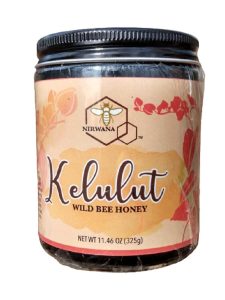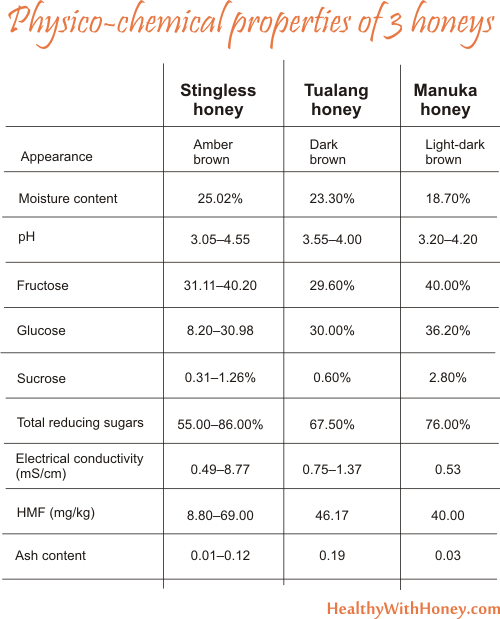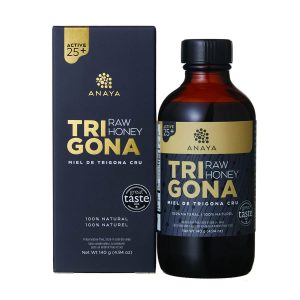Not all bees are alike. The stingless bee Trigona, aka kelulut bee, is a tiny wild bee that produces honey, too. And because honey is made with the help of bees’ salivary glands, the end product may be different than that produced by our domesticated Apis Mellifera bee. Let’s see.
How is Trigona bee honey compared to Apis Mellifera bee honey?
– Fewer. Such small bees (3 to 8 mm) cannot produce much honey. Beekeeping is focused on being first lucrative, honey is both food and medicine and it brings a lot of money. Bigger domesticated honey bees can offer that, even f they sting a lot.

– It is multifloral. There are chances to find coconut monofloral honey produced by trigona bees, but usually it is harvested from a varietal of flowers, during the entire summer. So, the honey may have a certain predominant flavor, but this doesn’t make it monofloral.
On the other hand, Apis Melliflora bees can produce monofloral honey or multifloral honey, depending on where their hives are taken.
– It has a different color, taste and viscosity. Trigona honey is much runnier than that made by Apis Mellifera bees.
– It’s unique. Coming from different places, the source of nectar is different. We might be tempted to say that tualang honey and trigona honey should be almost the same, as they are both produced in the rainforest of tropical regions.
But is not. First of all tualang honey is produced by the largest bees on the planer, Apis Dorsata, while trigona honey (aka kelulut honey) is produced by the smallest. Their enzymes are different, the way they make honey is different.
Secondly, Apis Dorsata are big bees and cannot collect nectar from tiny flowers, which are instead visited by Trigona bees. Hence these honeys have different nectar, different taste, different composition.
– It’s healthier. Malaysian Agricultural Research and Development Institute (Mardi) says that stingless bee honey is twice as nutritious as ordinary honey. Well, there is still need for more research and scientific studies, as till now little information is available. More about kelulut bee honey health benefits here: Health benefits of Trigona bee honey (aka kelulut bee honey)
– It contains high amounts of minerals:
An extensive study on honey by Mohammed Moniruzzaman et. al., published in BioMed Research International Volume 2014, reported that among the various honey varietals taken from the different regions of Malaysia, dark colour honey produced by Trigona from starfruit or carambola trees contains exceptionally high levels of potassium, magnesium, iron and zinc. (Read more about minerals and trance elements present in regular honey)
– Here are some physicochemical properties of tualang honey(after Erejuwa et al., 2010), Manuka honey (after Stephens et al., 2010) and stingless bee honey (after Souza et al., 2006):

Main differences between Trigona bees and Apis Mellifera bees
– Trigona bees have a higher tolerance to pests and diseases. Scientists said this may be due to their smaller size and the composition of their comb. While Apis Mellifera build their comb from pure beewax, Trigona bees mix the wax with propolis, adding thus a natural antibiotic to their protective walls.
– Beekeepers in Malaysia say they do not require maintenance feeding (usually sugared water) as they store surplus pollen throughout the year. In handling these hives beekeepers do not harvest all the honey in the hive – leaving at least 20% for the colony.
The harvesting is done only during honey flow seasons when the bees can still forage for food, and avoid raining seasons.
– Trigona bees are good pollinators, just like Apis Mellifera. But a beekeeper doesn’t have to transport the whole hives to another crop to make pollination. A Trigona hive can be easily split and transported to aid pollination of other crops.
– Beekeeping is much easier. There is no need for equipment such as frames, wax foundation, queen excluder, smoker, honey extractor, protective clothes. The inspection is done every 3 or 4 months, while at a regular hive it is done at least once a week.

Downsides of Trigona bees compared to Apis Mellifera.
– Due to their small size they can only harvest from a radius of 300 to 500 meters from the hive (compared to 5 km for Apis Melliflora). So this area should be filled with flowers for a good yield. That is why their hives are usually place in orchards.
– They produce a tine quantity of honey. One hive can make ½ kg per year, while an Apis Mellifera hive produces 30kg/year.
– Trigona bees live in geographic areas that are susceptible to frequent typhoons, which usually wipe out the harvest and their whole colonies.
============



